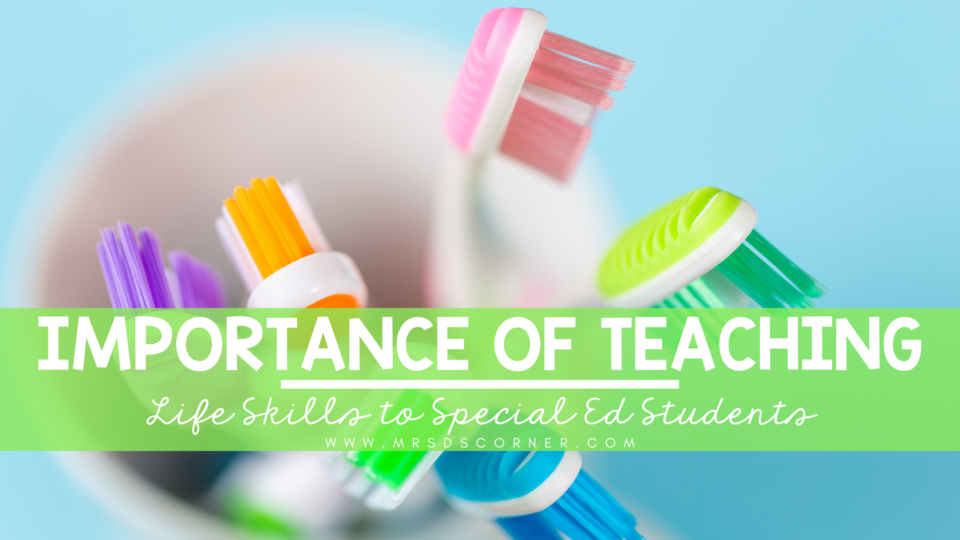Life skills are essential for individuals to navigate their daily lives effectively and independently. For special education students, these skills take on an even greater significance as they often require additional support and guidance to develop them. Teaching life skills to special education students not only empowers them to become more self-sufficient but also enhances their overall quality of life.


In this article, we will explore the importance of teaching life skills to special education students, discuss various life skills they need to learn, and provide examples of how you could teach each skill.
The Significance of Teaching Life Skills
Teaching life skills to special education students is crucial because it equips them with the tools they need to navigate their daily routines and interact successfully with their environment. These skills enable students to become more independent, self-reliant, and confident in their abilities. By acquiring life skills, special education students gain a sense of empowerment and develop the necessary foundations for leading fulfilling and meaningful lives.
Essential Life Skills for Special Education Students
Personal Hygiene
Personal hygiene is a fundamental life skill that includes activities such as brushing teeth, bathing, and grooming. I created the “How to Brush Your Teeth” free activity as part of my Life Skills Curriculum for special ed. This freebie is a valuable resource that can be used to teach special education students proper toothbrushing techniques. This resource includes a letter home to parents, a digital and printable adapted book, sequencing mats, a task analysis poster, and more. Each component is designed to reinforce the life skill and help students master it. You can grab a free copy of the How to Brush Your Teeth activities here!
Time Management
Time management is crucial for organizing daily activities and responsibilities, but it’s often so challenging for students. Special education students can benefit from visual schedules, timers, and checklists to help them manage their time effectively. You can create visual schedules using these pictures or symbols to represent different tasks and provide clear instructions on how to follow them.
Money Management
Teaching students basic money management skills enables them to handle financial transactions and make informed choices. Practical activities such as using play money, practicing in a Money Adapted Work Binder, shopping simulations, and budgeting exercises can help special education students understand the value of money, count coins, and make simple purchases.
Cooking and Nutrition
Cooking and nutrition skills are essential for maintaining a healthy lifestyle. You can incorporate cooking activities into their curriculum by introducing simple recipes and teaching students how to read food labels, measure ingredients, and follow step-by-step instructions. These activities can be adapted based on each student’s abilities and needs. Visual step-by-step recipes are often best and keep students engaged the longest!
Social Skills
Social skills encompass various abilities such as communication, empathy, cooperation, and problem-solving. Role-playing exercises, social stories, and group activities can help special education students develop effective social skills. Teachers can create opportunities for students to practice peer interactions through structured games and collaborative projects. Coffee carts are great for this!
Teaching Strategies for Life Skills
Visual Supports
Visual supports, such as visual schedules, social stories, and visual prompts, can enhance learning and comprehension for special education students. These visual aids provide clear and concrete instructions that help students understand expectations and tasks.
Task Analysis
Breaking down complex tasks into smaller, manageable steps through task analysis allows students to learn each step individually before integrating them into a complete process. This approach helps build confidence and ensures mastery of each component of the life skill.
Real-Life Context
Teaching life skills within real-life contexts fosters practical application and generalization of skills. For example, taking a class trip to a grocery store can provide hands-on experience in budgeting, making purchases, and identifying nutritious food choices.
Repetition and Reinforcement
Repetition is key when teaching life skills. Consistent practice reinforces learning and helps students develop automaticity in executing tasks. Providing positive reinforcement through praise, rewards, or tokens can also motivate students and reinforce desired behaviors.
Individualized Instruction
Recognizing that each student has unique abilities and learning styles is crucial when teaching life skills. Individualized instruction allows teachers to tailor lessons according to students’ strengths, preferences, and areas for improvement.
Teaching life skills to special education students is vital for their personal growth, independence, and overall well-being. By focusing on essential skills such as personal hygiene, time management, money management, cooking and nutrition, and social skills, teachers can empower special education students to lead fulfilling lives. Using strategies like visual supports, task analysis, real-life contexts, repetition, and individualized instruction enhances the effectiveness of teaching these skills. By incorporating these strategies and resources into your teaching practices, you can support special education students in developing the necessary life skills for success in daily living.

